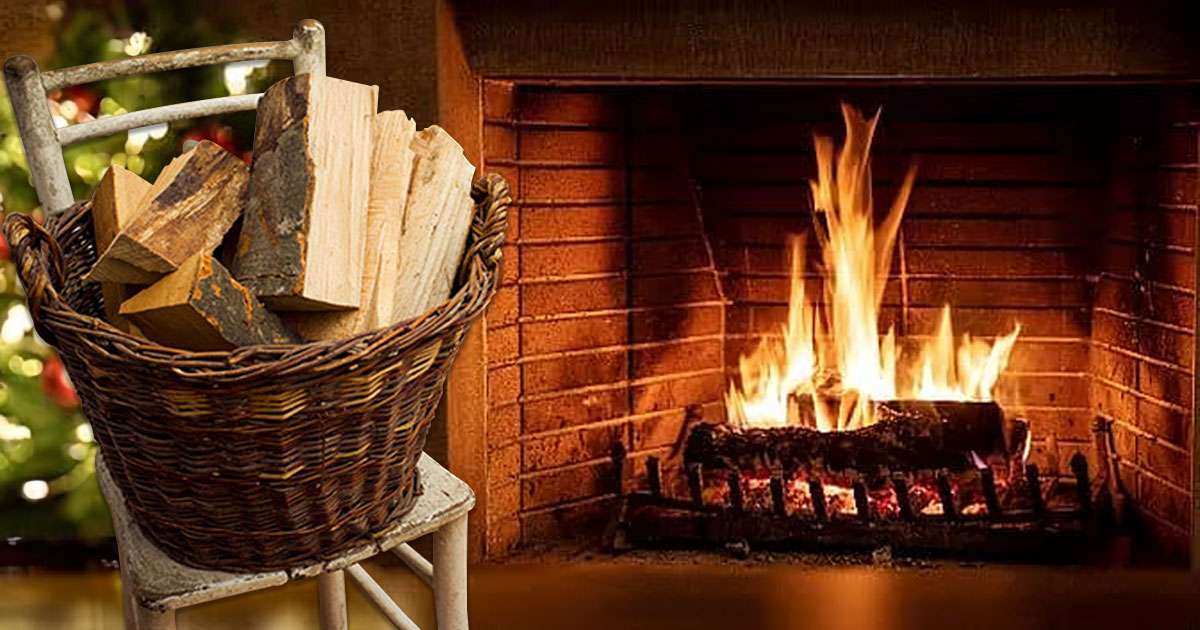Guide to Popping Firewood: Causes and How to Stop It

There’s a special charm to sitting by a crackling fire. Watching the flames dance and flicker is captivating, almost like seeing a natural show of light and sound. The fire moves in a way that creates warm glows and shadows, giving off a magical feeling that draws people in. But beyond this beautiful sight, there’s an interesting scientific reason behind why fire behaves this way.
The movement of flames is due to combustion—a chemical reaction between oxygen and a fuel source that releases energy as heat and light. This reaction creates the ever-changing patterns we see in the flames. According to researchers at the Department of Environment and Water in South Australia, the way fire dances is influenced by factors such as weather, the type of fuel, and the shape of the land.
While the sight of a crackling fire is enjoyable, it can also be dangerous, especially for those with traditional fireplaces. For homeowners, it’s essential to keep the fire well-maintained and to use dry, seasoned wood to minimize popping. Even a single pop or crackle can cause worry, highlighting the need for proper fireplace safety measures.
What Causes the Pop and Crackle of Firewood?
When firewood burns, it often makes popping and crackling sounds, adding to the cozy atmosphere. These noises can range from soft, gentle snaps to loud, sharp pops. But what exactly causes these sounds?
The main reason behind the popping and crackling is the presence of moisture and gases within the wood. As the fire heats up, the water and sap inside the wood start to boil and turn into steam. This steam builds up pressure until it bursts out, creating the popping sound. Additionally, wood contains cellulose, which breaks down when heated, releasing gases that also contribute to the noise.
According to a study by Western Sydney University, wetter wood tends to pop more because it has a higher moisture content. When the steam and gases escape rapidly, they produce the familiar crackling sounds. This scientific explanation helps us understand that the charming sounds of a crackling fire are actually tiny explosions happening inside the wood.
The Dangers of Firewood Crackling and Popping
While the crackling and popping sounds of firewood add to the charm of a fireplace, they can also be dangerous. When wood pops, it can send hot embers flying out of the fireplace, potentially causing burns or starting fires. It is important to take precautions to keep your fireplace safe.
How to Reduce Crackling and Popping
- Use Dry, Seasoned Wood: Using dry, seasoned wood is one of the best ways to reduce popping. Freshly cut wood contains a lot of moisture, leading to more popping as the water inside turns to steam. Properly seasoned wood, dried for at least six months, has less moisture.
- Store Wood Properly: Store your firewood in a dry place. Keep it off the ground and covered to protect it from rain and moisture. This helps maintain the wood’s dryness and reduces popping.
- Split Wood into Smaller Pieces: Smaller pieces of wood dry faster and more evenly than larger logs. Splitting your firewood into smaller pieces can help reduce moisture content and minimize popping.
Making Your Fireplace Safe
- Use a Fire Screen or Glass Doors: A fire screen or glass doors in front of your fireplace can help contain flying embers. These barriers provide extra protection, preventing hot sparks from escaping and causing harm.
- Maintain Proper Ventilation: Ensure that your chimney and flue are clean and well-maintained. Good ventilation prevents the buildup of smoke and gases, making your fireplace safer and more efficient.
- Keep a Safe Distance: Arrange furniture and other flammable items at a safe distance from the fireplace. This reduces the risk of accidental fires caused by stray embers.
- Regular Chimney Inspections: Have your chimney inspected and cleaned regularly to remove creosote buildup. Creosote is a flammable substance that can accumulate in the chimney and cause fires if not properly managed.
Ensuring Fireplace Safety from Crackling and Popping
If you’re worried about the dangers of crackling and popping firewood, there are safer ways to enjoy a cozy fireplace experience. Gas fireplaces provide a clean and efficient option, offering steady heat and ambiance without the risk of flying embers. They also need less maintenance and remove the hassle of storing firewood.
Another effective measure is to use fire-resistant rugs in front of your fireplace. These rugs catch stray embers, preventing damage to your flooring or potential fires. Installing a spark guard, a metal mesh screen that fits over the front of your fireplace, can help contain sparks and embers while still letting you enjoy the fire’s view. Spark guards come in various sizes and designs to fit different fireplace openings.
Electric fireplaces offer another safe alternative by simulating the look of a real fire with LED lights, producing heat without the risk of sparks or embers. They are easy to install and can be placed in any room in your home. By considering these options, you can still enjoy the warmth and charm of a fire while ensuring your home remains safe. Whether you choose a gas or electric fireplace or add protective accessories like fire-resistant rugs and spark guards, you can create a cozy and secure environment for your family.

